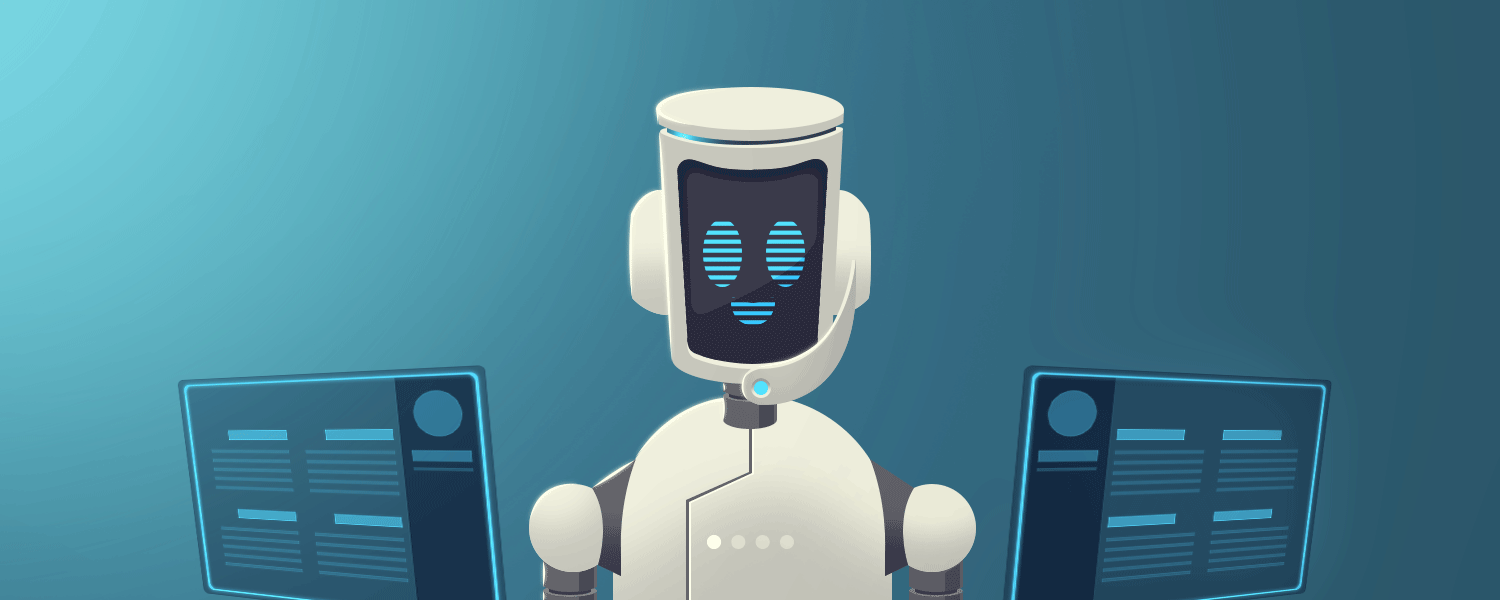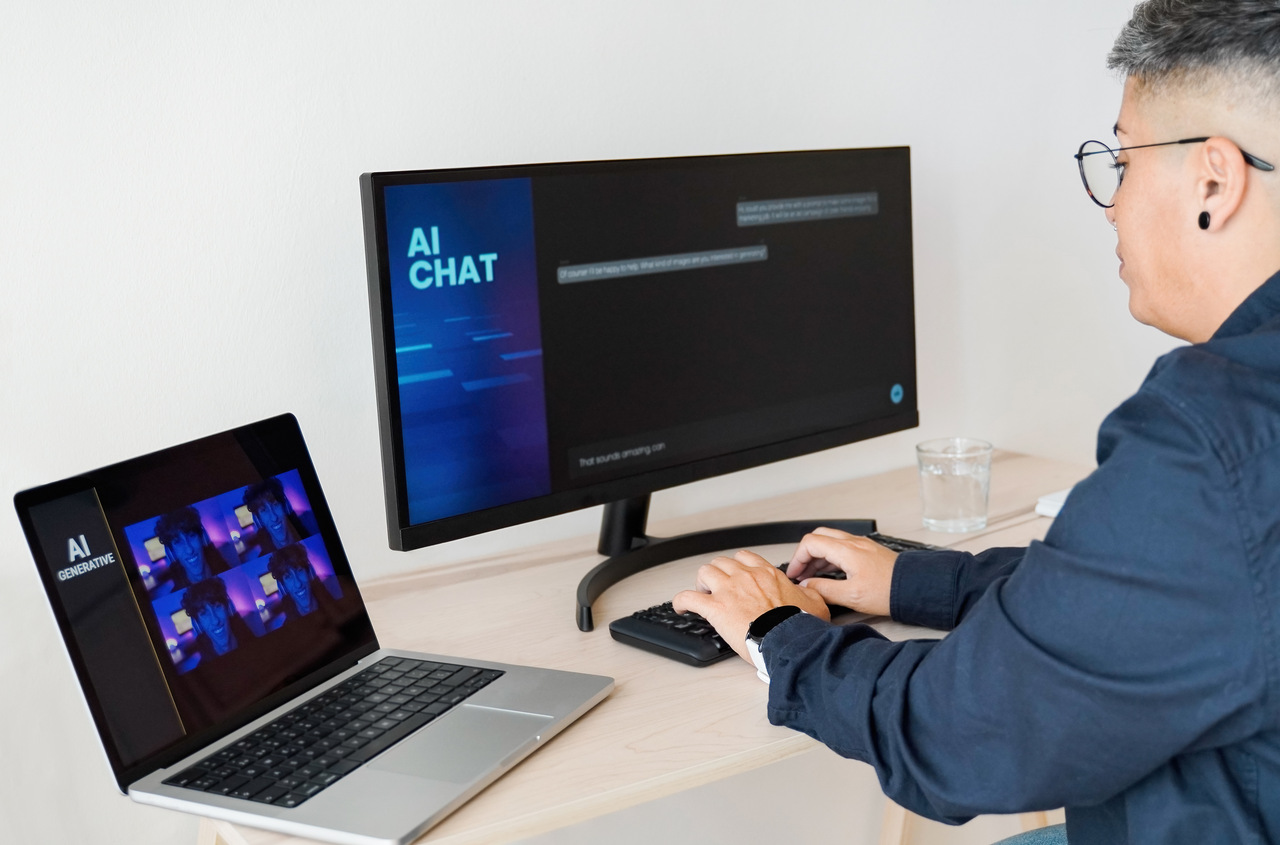
Step-by-Step Guide to Add an AI Chatbot on WordPress Website
In the era of automation and artificial intelligence, the AI chatbot has become a fundamental aspect of digital platforms.
They serve as the first point of contact for resolving customers' queries, reducing the load on human customer support staff and greatly improving service efficiency.
Imagine you run an online store on a WordPress website. You have customers from all over the globe making inquiries at any given time of day. Keeping up with these queries could be a nightmare!
This is where the AI chatbot steps in, providing round-the-clock automated customer support, leaving you more time to focus on other aspects of your business.
Let’s get started on the journey of integrating an AI chatbot into your WordPress website!
Overlook to Chatbots
Chatbots, in a nutshell, are software applications that engage in human-like conversations. They execute tasks or provide information based on input from the user. This interaction is typically facilitated through a graphical user interface.
Today, AI chatbots are no longer a novelty but a necessity in various fields, including e-commerce, customer service, healthcare, and even in personal assistance roles.
AI makes these chatbots seem 'alive' – they understand language, not just commands. Further, they learn continuously from the interactions they have with users.

But why are chatbots so important?
1. Improved Efficiency: Chatbots can interact with thousands of users simultaneously. This multitasking ability tremendously improves efficiency, particularly for businesses with a global user base.
2. 24/7 Availability: AI chatbots are software programs that can work round-the-clock without any breaks, ensuring uninterrupted service for your users.
3. Cost-Efficient: Automated customer services by AI chatbots can save businesses substantial amounts in salaried employees, reducing or removing the need for human support in specific areas.
4. Personalization: Advanced AI chatbots can analyze user behavior and preferences, providing personalized suggestions, which enhances the user's overall experience.
How to Integrate an AI Chatbot with WordPress
After demystifying what AI chatbots are and their significance for your business. But now, let's get to the main event—the step-by-step process of 'how to add an AI chatbot on your WordPress website.'

Step 1: Choose a Chatbot
Picking the right chatbot can be the starting point or a stumbling block in your quest to add an AI chatbot to your WordPress website.
Your selection should be based on your needs, target audience, and business goals.
Some preferred options include:
1. WP Chatbot: It's designed specifically for WordPress. WP Chatbot is highly customizable and is directly integrated with WordPress, making setup straightforward.
2. IBM Watson Assistant: This more sophisticated option caters to enterprise-level needs. IBM Watson is powerful and can be integrated with various platforms, including WordPress.
3. DialogFlow (formerly API.AI): Owned by Google, this AI-powered software can be utilized to create conversational interfaces and chatbots that can be connected to various platforms, including WordPress.
4. LiveChatAI: As an effective and simple choice of a chatbot, LiveChatAI presents a very seamless user interface and possibilities to make your Wordpress website an appealing one.
Each chatbot solution comes with its own set of pros and cons, so be sure to research and identify the best match for your business.
Step 2: Install and Activate the Chatbot
The next step seems obvious but can have some nuances based on the chatbot you choose.
In most cases, within WordPress, you'll need to install a plugin that facilitates your selected chatbot on your WordPress website. Here's a general series of steps to follow:
→ For WP Chatbot
1. Go to your WordPress admin panel.
2. Navigate to 'Plugins,' then select 'Add New.'
3. Search for 'WP Chatbot' in the search bar.
4. Click 'Install,' and once installed, click 'Activate.'
This process is very similar when you want to install other chatbot plugins on your WordPress website.
→ When it comes to LiveChatAI, you need to:
1. Open a LiveChatAI account.
2. Add website and import data. You can simply enter the URL of the target website or enter the sitemap of it.
3. Then, you need to choose pages and train AI by deciding on the page.
Step 3: Connect the Chatbot to Your Account (e.g., Facebook, IBM Cloud)
Once you've installed and activated the chatbot, the next critical step in adding an AI chatbot to your WordPress website is to establish a connection with your account. This will allow your chatbot to communicate with your users in real time. Follow these steps:
For WP Chatbot
1. Go to your WordPress admin panel and click on 'WP-Chatbot' on the left menu.
2. Click 'Connect Your Facebook Page' and log in with your Facebook account (if you chose Facebook as your chatbot platform).
3. Once logged in, review and grant the requested permissions.
Turning to LiveChatAI:
1. You can customize your chatbot step-by-step.
2. On step three, which is “Customize Messenger”, you can add a different platform to your account on the Human-Agent Handoff Settings.
3. Click “+ Add new platform” and choose your target ones.
Remember, this process may look a bit different based on the chatbot service you opt for.

Step 4: Develop Responses
After successfully integrating your chatbot with WordPress, it's time to develop responses.
No matter how advanced your chatbot is technical, if it can't engage effectively with your users, it will fail to add value. Here, you need to program its responses methodically.
Much like scripting a play, develop potential scenarios contained within a conversation and decide upon responses that the chatbot can provide.
There are many ways to do this, including preset quick replies, personalized greetings, or even advanced replies using AI technology.
Nevertheless, most chatbot providers offer a user-friendly interface to create these text-based interactions. Ensure the chatbot's responses are human-like, friendly, and, most importantly, helpful.
Step 5: Test Your AI Chatbot
The final step is to test, improve, and repeat. A developed chatbot should be tested extensively and regularly to ensure it can handle all possible queries.
Also, bear in mind that testing is not a one-time process but an ongoing practice. As you receive user reviews or feedback, use it to refine your chatbot's performance and enhance engagement.
Testing includes checking:
1. Responsiveness: How quickly does the chatbot respond to a query?
2. Relevance: Is the answer relevant to the question asked?
3. Efficiency: Is the answer efficient and beneficial?
Perfecting these aspects will contribute to enhancing the user experience on your site.
Adding a chatbot to your WordPress website can seem intimidating initially. However, with the help of this step-by-step guide, we hope you're equipped with useful information to begin your journey.
How to Handle Possible Issues while Integrating the Chatbot
You might encounter a few potential issues when adding an AI chatbot to your WordPress website.
However, don't let these glitches deter you from integrating this fabulous technology into your site.

Troubleshooting Common Errors
Let's now focus on some common issues you might encounter while integrating your AI chatbot.
You should remember that the errors might change based on your chatbot. We have gathered the most common errors based on adding an AI chatbot to your WordPress website.
1. Issue: Language Change Not Showing Up
One error you might occasionally encounter while integrating a chatbot into your WordPress website is when the change of language doesn't show up. For instance, you've set your chatbot to communicate in Spanish, but it keeps responding in English.
How to Fix:
1. Check whether your server's processing speed and Internet connection are fast enough. You can also consider upgrading to a WordPress optimized hosting provider. Slow hosting or lagging servers can result in slow response times.
2. Clear the cache of your WordPress website and try again.
3. Alternatively, you can reach out to your Chatbot service provider for assistance if the issue persists.
2. Issue: Unable to Connect to DialogFlow
You might also face issues connecting your chatbot to DialogFlow, an AI-powered tool that helps you create conversational interfaces for your chatbots. It could be due to different reasons like network issues, incorrect inputs, or server errors.
How to Fix:
1. Check if you're using a stable internet connection. Connectivity issues might prevent you from integrating DialogFlow with your chatbot.
2. Verify the inputs you've entered while trying to connect. Any mismatches in the process could throw up this error.
3. Check whether DialogFlow's servers are working correctly. If not, you may have to wait until they're up and running again.
3. Issue: Chatbot Not Responding or Slow Response
What if the chatbot is not responding or its response time is quite slow? It could be a serious issue as it directly affects customer interaction and satisfaction.
How to Fix:
1. Check whether your server's processing speed and Internet connection are fast enough. Slow servers can result in slow response times.
2. Check if your chatbot's AI is struggling to understand user queries due to complex language or jargon. You might need to train your AI with these phrases to improve its response time.
3. If you find that your chatbot is struggling with server load, you may need to optimize the chatbot's code or advance to a higher server capacity package.
4. Issue: Inaccurate or Inappropriate Responses
A recurring issue faced by users is that chatbots, especially AI-driven ones, can sometimes produce inaccurate or inappropriate responses. This can have a negative impact on your brand if not correctly handled.
How to Fix:
1. Work on improving your AI's learning. Feed it with more data and train it adequately to make precise decisions.
2. Regularly track and review the responses provided by your chatbot. This will help you spot anomalies and adjust settings or train the AI to avoid such issues in the future.
Remember, encountering errors is a part of the learning process. It's important not to lose heart. The idea is to keep improving by understanding what's not working, fixing it, and moving forward.

Advanced Tips for Using an AI Chatbot on WordPress
Now, you have successfully integrated an AI chatbot onto your WordPress site. But this is just the beginning.
We will share advanced tips to enhance your chatbot user experience and improve its functionality because your chatbot is as effective as you make it.
So, let's learn how to maximize its capabilities!
Adding New Conversations to the AI Chatbot
Once your chatbot is operational, the real challenge is adding new conversations to keep the interaction with users engaging and productive.
The goal is to strike a balance between your chatbot's intelligence and the ease with which users can navigate the conversation.
Here are some tips for adding new statements to your chatbot:
1. Craft Clear Statements: Ensure the bot's statements are easy to understand and devoid of complex language or technical jargon. The clarity in communication is critical for a meaningful conversation with the user.
2. Diversify Your Conversations: Ensure your chatbot can handle a variety of topics, keeping the conversation diverse and engaging. The responses should also vary according to the context.
3. Infuse Personality: Your bot is a representative of your brand. So, try to infuse your brand's voice and personality into the chatbot's conversations. This will help create a consistent user experience.
4. Utilize User Data: Use the data accumulated from user interactions to identify patterns and commonly asked questions. This analysis will help you modify or introduce new statements that cater to the user's needs better.
5. Test Regularly: A large part of adding effective new conversations to your AI chatbot lies in continuous testing and optimization.

Including Rich Content (Images, GIFs, Videos, etc.)
Who said conversations have to be text-only? To improve the user experience and make the interaction more engaging, your AI chatbot can and should handle rich content such as images, GIFs, videos, and more. This makes the conversation more interactive, increasing user engagement.
Here's how you can achieve this:
1. Images and GIFs: Chatbots supporting rich content can send images or GIFs to make conversations more dynamic and engaging. For example, give your users a closer look at your product or show a funny GIF to lighten the mood.
2. Videos: This can be a game-changer for explanatory or tutorial purposes. A short video showing how to use a feature or a product can help the user understand better and faster, improving user experience.
3. Links and Quick Replies: Providing users with clickable elements, such as links to relevant web pages or buttons with quick replies, can expedite the conversation flow and make the experience smoother.
However, note that the capacity to send rich content depends on the chatbot platform and endpoint applications (like Facebook, Slack, etc.). So, choose your platform wisely.
Adding Line Breaks and Using HTML Tags
The presentation of your bot's responses directly affects the readability and overall user experience. Hence, proper formatting is as crucial as the content itself.
Line breaks and HTML tags are instrumental in this:
1. Line Breaks: Adding a line break, in simple terms, is equivalent to hitting the 'Enter' or 'Return' key, essentially starting a new line. Line breaks can help make the bot's responses easier to read and understand.
2. HTML Tags: If your chatbot platform supports HTML, you can utilize it judiciously to format the bot's responses better.
Remember, adding too many formatting elements can also backfire, making the text cluttered. The goal is to use these tools to simplify and organize your chatbot's responses in a user-friendly manner.
In a nutshell, using these advanced tips and techniques should help you optimize the use of your AI chatbot on a WordPress website.
But remember, the process doesn't stop here - chatbot management is dynamic, and you should regularly track your bot's performance, draw insights, and implement the improvements.

Insights into the Future of AI Chatbots on WordPress
The future of AI chatbots on WordPress looks promising, and here's why.
- Improving Customer Service
The AI chatbot is poised to become the backbone of customer service on WordPress websites moving forward. The efficiency, speed, and cost-effectiveness provided by AI chatbots continue to be huge selling points.
- Advanced Customization
The future will witness AI chatbots on WordPress becoming highly customizable. They'll be able to align seamlessly with the brand's voice, giving visitors an immersive experience.
- Voice Assistants
Industry insiders predict that AI chatbots will evolve into voice assistants. Instead of typing responses, users will be able to converse with the chatbot, akin to interacting with Alexa or Siri.
- Greater Integration
In the future, chatbots on WordPress will integrate even more closely with other marketing efforts. For example, a visitor's interaction with the chatbot could influence the type of products suggested to them, enhancing personalization.
- Increased Usage
While AI chatbots are growing in popularity, that growth will likely accelerate even more in the near future. As more people see the tangible benefits of chatbots, the adoption rates will likely increase.
The potential of AI chatbots on WordPress goes beyond automation and efficiency; these advanced tools open the door to personalization and unprecedented customer service.
They're a crucial ally that can revolutionize your WordPress site and redefine the visitor experience.
Conclusion
It's undeniable that the world of customer engagement is rapidly changing with the integration of AI chatbots.
These smart companions are no longer the future; they are our associates in the present, relentlessly aiming to nurture customer satisfaction and drive up your business efforts.
In this technological age, where we are continually exploring ways to optimize our businesses and services, chatbots emerge as a defining tool in transforming the user experience.
Their ability to comprehend and respond intelligently to user queries around the clock, their power to learn and evolve from user interactions, and their potential to handle multiple users simultaneously are, without a shadow of a doubt, valuable assistance in the digital world.
Hence, the importance of learning and improving on how to add and optimize an AI chatbot on your WordPress site.






